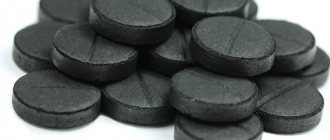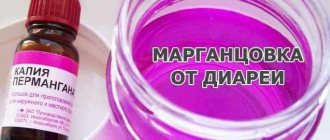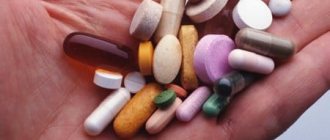With COVID‑19, one of the symptoms may be diarrhea. This means the virus has attacked the digestive tract. To protect yourself from illness, strengthen the immunity of all mucous membranes, especially in the intestines.
Our expert is a gastroenterologist, hepatologist, professor, leading researcher at the research center of the St. Petersburg State Pediatric Medical University, Doctor of Medical Sciences Evgeniy Sas .
At the beginning of the pandemic, the disease was perceived as a banal ARVI. In extreme cases, the flu. But over time it turned out that the infection was much more dangerous. After all, it affects not only the respiratory tract, but also most body systems. In particular, the gastrointestinal tract.
The causes of this disease in humans
Like any other infection, intestinal infections are known to occur due to infection with pathogenic microorganisms:
- fungi;
- protozoan microbes, for example, single-celled coccidia or amoebas;
- viruses, most often these include enterovirus and rotavirus;
- bacteria, among which are enterobacteria, for example, salmonella and opportunistic pathogens - staphylococci or proteus.
Any infectious-toxic microorganism enters the human body through the environment. Thus , the risk of infection is especially high through contact with a sick person or animal, since intestinal infections often multiply in the bodies of domestic animals, but do not affect them.
The routes of infection are different. Most often, bacteria can be contracted through food, water, or household items that have been used by a sick person, such as dirty cutlery or dishes. Such household items should be avoided.
A variety of microorganisms that are causative agents of intestinal infections can multiply in food products if their storage rules are violated and do not meet sanitary standards.
Diagnosis
When symptoms indicate a possible gastrointestinal infection, they can be confirmed or refuted by laboratory tests used to detect antigen from stool samples. In some cases (eg, E. coli, salmonella, etc.), antibiotic susceptibility testing is used to determine the resistance of microorganisms to therapy, if necessary. Particularly in a hospital setting, rapid diagnosis provides important information for implementing infection control measures.
To find out the cause of diarrhea, it's helpful to consider whether the exposure was a food outbreak or "travelers' diarrhea."
- Food outbreak. Often a group of people who eat together suffer from the same disease. A public health problem, when widespread, affects individuals in different places and over a longer period of time. It is important to recognize and track epidemiologically to prevent more people from becoming infected. E. coli, Salmonella, Campylobacter, and Staphylococcus are some of the most common pathogens associated with foodborne outbreaks.
- "Traveler's diarrhea." The most common illness associated with staying in another country. People travel in places where there are pathogens different from those to which they are accustomed. Especially in regions where food and water contamination is more common. It is most often transmitted by ingestion of food and liquids contaminated with feces. Most cases are caused by bacteria, including E. coli, salmonella and shigella.
Symptoms of intestinal infections in young children
Intestinal infections, according to doctors, are caused by a certain type of microorganisms and have similar symptoms:
- intoxication;
- disruption of the gastrointestinal tract.
Certain intestinal infections exhibit specific symptoms.
Dysentery. A common intestinal infection, the epidemic of which is always recorded in the summer.
The first sign of dysentery is a sharp increase in body temperature to 39 °C. The person begins to feel weakness and chills, the appetite noticeably disappears, sharp headaches appear, and sometimes convulsions may appear.
Intestinal infection is accompanied by severe cutting and spasmodic pain in the abdomen. The process of defecation during infection can occur up to twenty times in one day, the stool contains blood and mucus.
Salmonellosis, like dysentery, begins with a high temperature of up to 38°C, and, like all intestinal infections, is accompanied by nausea, vomiting and diarrhea.
The stool is copious, the color of the stool differs from normal, has a slightly greenish tint, in some cases there is blood and mucus in small quantities in the stool.
Salmonellosis is not a dangerous infection for an adult, but for children there is a great threat, so do not forget to carry out the necessary medical procedures.
Also, this intestinal infection has several forms, one of them is influenza-like. It has similar symptoms to another infection - influenza, the main symptoms of which are:
- nasal congestion;
- inflammation of the nasal mucosa;
- headaches;
- temperature;
- development of conjunctivitis.
Escherichiosis is a subsection of intestinal infections that combines the largest number of different infections.
Symptoms of these intestinal infections include:
- elevated temperature;
- severe fatigue;
- drowsiness;
- vomit;
- diarrhea.
The stool is profuse and has a yellowish tint.
Rotavirus is a fast-acting intestinal infection.
It begins sharply and abruptly. Most symptoms are most severe within the first day after infection. People affected by rotavirus infection experience a sharp increase in body temperature, general intoxication of the body, severe diarrhea, and watery stools.
Rotavirus intestinal infection is often confused with respiratory diseases:
- dry cough;
- nasal congestion;
- inflammation of the mucous membranes;
- a sore throat.
There are two types of staphylococcal intestinal infections:
- Primary. Staphylococcus entered the body through the fecal-oral route through water, food or household items.
- Secondary. Staphylococcus entered the body in other ways.
Staphylococcal intestinal infections occur in a fairly severe form.
This intestinal disease is one of the most dangerous, since pathogenic microorganisms can spread beyond the source and affect organs not only of the gastrointestinal tract, but also other systems.
The main symptom of staphylococcal infection is severe toxicosis. The process of defecation occurs from ten to fifteen times a day, the stool has a greenish tint, and in some cases mucus may be present.
Staphylococcal disease is quite severe and is accompanied by the development of severe toxicosis and exicosis. At the same time, the person’s stool is watery, the urge to go to the toilet is up to 10–15 times a day. The stool is green and may contain mucus.
In weakened organisms, microorganisms are able to spread beyond the gastrointestinal tract, which sometimes leads to damage to other human systems and organs.
Secondary staphylococcal infection in adults is very rare. It often appears in children as a complication of acute tonsillitis, staphyloderma, acute pneumonia, as well as pyelonephritis and other ailments caused by staphylococci. This form of intestinal disease is characterized by a long, wave-like course.
Antibacterial drugs
As for antibiotics, they are prescribed only after vomiting, if any, subsides. In addition, these drugs are prescribed to adults only in severe cases, and to children more often, but not always.
- Levomecithin
Bacteriostatic antibiotic. Available in tablets. The main substance is chloramphenicol (chloramphenicol).
For adults, a single dose of 250-500 mg half an hour before meals.
Children aged 3 to 8 years are usually prescribed 125 mg of the drug 3-4 times a day. Children and adolescents aged 8 to 16 years are usually prescribed 250 mg of Levomycetin 3-4 times a day. The course of treatment is usually 1-1.5 weeks. Can be taken 3 times a day. Do not use the drug if you have the flu, pregnancy, psoriasis, or kidney failure.
- Doxycycline
Antibiotic active against gram-positive bacteria. on the 1st day of treatment, a dose of 200 mg of the drug. In the following days, 100-200 mg per day, depending on the severity of the disease. You can also calculate the dose by weight: for children over 9 years old and weighing more than 50 kg, the daily dose of the drug is 4 mg/kg on the 1st day of treatment, on subsequent days, 2-4 mg per kg of body weight per day, depending on the severity diseases. Contraindications: age under 9 years (or up to the age when molars are formed), pregnancy and breastfeeding, kidney and liver dysfunction, leukopenia, porphyria.
How to determine such an acute disease as an intestinal infection?
- An intestinal infection does not always begin with a high temperature.
- Often it occurs immediately with nausea, vomiting and mild abdominal pain in the first 2-12 hours, but there is no temperature or even it decreases.
- Vomiting from 1 to 20-30 times, first with food, then with “water”, then with “yellow water” (bile). At the end of the vomiting period, the child often has “empty” vomiting movements.
- Then the vomiting subsides and for 2-3 days the child becomes lethargic with decreased appetite.
- Often (but not always) after the vomiting period, fever begins (up to 39, literally the first two days) and diarrhea (usually watery).
- Gradually, diarrhea subsides within 2-7 days, appetite and well-being improve, and the child recovers completely.
Salmonella
Salmonella produces endotoxin, which causes a condition called “food poisoning.” Clinical manifestations are very varied, as are complications of the disease. Symptoms and treatment for food poisoning may differ between children and adults. Infants and elderly people are usually hospitalized with salmonellosis.
The target of bacteria is the mucous membrane of the small intestine. The disease is accompanied by fever, nausea, abdominal pain, vomiting, and loose stools. If treatment is started on time, salmonellosis goes away within 10 days.
- antibiotics;
- rehydration solutions;
- intestinal sorbents for removing toxins;
- probiotics to restore the balance of intestinal microflora;
- diet and vitamin therapy.
How to distinguish food poisoning from a dangerous intestinal infection?
In order to be able to distinguish food poisoning due to poor quality food from an intestinal infection, you should know the main differences and characteristics of these diseases. The table below will help with this. An intestinal infection has a number of characteristic symptoms, just like ordinary poisoning.
| Characteristics of the disease | Intestinal infection | Common food poisoning |
| Speed of spread in teams | The infection causes rapid spread in any circle of people, especially among school-age children. | Symptoms are only detected in a specific person or a small group of people who eat the same foods. |
| Temperature indicators | If intestinal infections enter the body, the temperature is often below 38 degrees Celsius; the temperature gradually drops to normal on the third or fourth day. | High temperature rise to 38 degrees Celsius or higher. |
| Chair | Intestinal infections are frequent and abundant, with a watery consistency. | Liquid with a foul odor. |
| Incubation period | With intestinal infections, the pathogen needs a certain time to multiply and produce toxins. From the moment of illness to 2 weeks, signs of infection may not be detected. | If you are poisoned by poor-quality food, you may feel unwell on the same day. Malaise appears within a couple of hours when eating low-quality foods. |
| Additional symptoms | Signs of intestinal infections characteristic of colds. | Loss of coordination of movements, confused consciousness. |
Causes of bacterial gastroenteritis
Numerous viruses can cause GD, for example:
- Yersinia, found in pork.
- Shigella - in water (often in swimming pools).
- Campylobacter - in poultry.
- E. coli - in ground beef and salads.
- Staphylococcus found in dairy products, meat and eggs.
- Salmonella - in meat, dairy products and eggs.
Outbreaks of bacterial gastroenteritis can occur when restaurants serve contaminated food. Low-quality products can also be purchased in any store.
HD can easily spread from one person to another if someone carries the bacteria on their hands. Every time an infected person touches food or objects, he risks spreading the disease. A person can cause the infection to enter their own body even if they touch their eyes, mouth, or other exposed parts with infected hands.
A person is especially at risk if they travel a lot or live in a crowded area. To prevent this, washing your hands frequently and using a sanitizer that contains more than 60% alcohol will help prevent infection from others.
What to do to improve the patient's condition?
For example, if you have an intestinal infection, it is recommended to drink:
A solution for soldering in case of intestinal illness can be prepared independently, if it is absolutely impossible to find an industrial solution: 3 g (full level teaspoon) table salt, 18 g (6 teaspoons) regular sugar per liter of boiled water. (Recipe from the book “ WHO. Treatment of diarrhea”).
This rhythm is easily tolerated by the child (if you drink in one gulp, we will provoke vomiting, and if too little and rarely, the child will become dehydrated).
On average, feeding a child with an acute intestinal infection requires approximately 100 ml per kilogram of body weight.
That is, 1000 ml for a baby weighing 10 kg, but more may be needed.
To make it more comfortable, you need to make sure that your baby has moist skin and pees about once every three hours. If he pees less often, then let’s drink more until urination becomes more frequent.
1. Dehydration in both cases is very strong. Wrong actions only lead to a worsening of the patient's condition. The most important thing that SHOULD be done in case of acute gastroenteritis is to feed the child with saline solutions.
- Humana Electrolyte;
- Hydrovit;
- Oralit;
- Naturalyte;
- Pedialyte;
- Rehydralyte;
- Infalyte.
2. It is important not only WHAT to solder, but also HOW: 2-3 tablespoons every five minutes.
Enter from the rear
The entry gate for coronavirus is the ACE2 receptors, which, in addition to the respiratory tract, are also found in the epithelium of the esophagus and intestines. Therefore, a dangerous virus can not only be inhaled, but also acquired through dirty hands and contaminated food. And once it gets on the mucous membrane, it will cause damage to the digestive organs.
This phenomenon is not at all unique; everyone knows the “intestinal” variants of ARVI. Therefore, in everyday life, and even more so during a pandemic, it is important to observe basic sanitary and hygienic standards: wash your hands after going outside, going to the toilet and before eating, carefully handle fresh fruits and vegetables and avoid eating undercooked, undercooked food.
What should you do if you have an intestinal infection, depending on your age?
| Age | What to do if you have an intestinal infection |
| Babies | A breastfed baby SHOULD be breastfed as often as possible, but reduce the feeding time. If your baby is receiving formula, continue feeding the same formula as usual. For prolonged diarrhea, give the child 50-100 ml of a special rehydration solution after each episode of vomiting or loose stools. If vomiting continues, reduce the amount of milk or formula at each feeding to 15-30 ml, but feed every hour. |
| Children under 2 years old | A child under 2 years old with an intestinal infection needs to drink at least a liter of saline solutions or other liquid per day. It all depends on the amount of water you offer. Offer your child the food he usually eats. Better more often and little by little. Products that are healthy for a child: cereal, bread, potatoes, lean meat, unsweetened yogurt, bananas, applesauce, vegetables. It is undesirable to limit the diet to liquid food, since it is not enough to replenish the loss of vitamins and fluid loss through vomiting and loose stools. |
| Children after 2 years | After two years you need to drink up to one and a half to two liters. During the recovery period, you can feed the child with light soups or broths, low-fat cereals and other light foods, more often and in small portions (irritated by frequent vomiting, the stomach may not accept heavy or plentiful food, and vomiting may recur). |
| Adults | Intestinal infections in adults - you need to take Enterosgel according to the instructions. Fasting is useful during this period. You should also prepare a solution of Regidron or drink Borjomi water. |
Features of treatment in case of cholera
Unfortunately, cholera occurs as a form of intestinal infection. This disease is one of the most dangerous; it can be transmitted by airborne droplets and quickly infect a large number of people. Ordinary flies that surround us every day can also be carriers.
Cholera is an infectious disease that affects the gastrointestinal tract. It has a sad reputation; during its outbreaks, entire cities perished, and this happened in a matter of days and weeks. Its causative agent is intestinal vibrio, but all the symptoms of the disease occur as a result of the activation of its toxins - waste products.
Cholera vidrion is a dangerous bacteria that can cause dehydration in a matter of hours.
Cholera has a number of features that are unique to it. A person who falls ill with this disease begins to rapidly lose fluid from the body, experiences constant vomiting (without a feeling of nausea, which is noteworthy), and also suffers from diarrhea.
A person who has been diagnosed with this most dangerous disease must be immediately hospitalized and placed under complete quarantine. It is necessary to exclude any contact with the outside world, while simultaneously using intensive therapy. First of all, treatment should be aimed at replenishing the water balance by administering intravenous fluids and antibiotics. The latest drugs will be able to some extent reduce the removal from the body of electrolytes that are released due to diarrhea and reduce the duration of this phenomenon. Oral medications are prescribed only after the gag reflex disappears. You need to take antibiotics from several days to a week, the duration directly depends on the patient’s condition. Most often, doctors prescribe the following drugs:
- Levomycetin;
- Tetracycline;
- Erythromycin;
- Succinate;
- Doxycycline;
- Tsiprolet.
Vibrio cholerae is weakly resistant to the first two drugs. If the patient is severely dehydrated, they should be administered immediately after hospitalization. They are administered infusionally and gradually.
Signs of dehydration syndrome in a child
You also need to monitor for signs of dehydration during an intestinal infection (esciosis), primarily the frequency, volume and nature of urine. If the urine is absent for 8-12 hours, it is dark with a strong ammonia odor, and the saliva is thick and sticky - all this indicates dehydration.
Especially often, eskiosis begins very quickly in that version of the intestinal infection, where there was no temperature at the beginning, or even it was reduced.
Other signs include:
- dry mucous membranes;
- the tongue is covered with a white or gray thick coating, dry;
- thirst;
- retraction of the fontanel in children;
- the child is inactive, sleepy, difficult to wake up;
- sunken eyes.
Diagnostic procedures
Diagnosis begins with a general examination and medical history. The doctor should find out what the patient ate for two days, this will help identify the cause.
It is very important to exclude other pathologies with similar symptoms; for this, a number of procedures are performed:
- Examination of stool (the nature of the masses makes it possible to determine the type of bacterial infection);
- Virus detection test (material – patient’s venous blood);
- Cultures of stool and vomit (as additional research);
- Colonoscopy, sigmoidoscopy – instrumental studies.
What not to do if there are signs of an intestinal infection?
The most important thing NOT to do if you have an intestinal infection:
- Do not use any medications on your own.
- If this is an intestinal disease, you cannot anesthetize the child (occasionally an “acute abdomen” is hidden behind the mask of an intestinal infection).
- Antibiotics (do not affect viruses!) and pro-eubiotics: Enterofuril (stopdiar), Smecta (neosmectin), Linex (atsipol, etc.), Creon (mezim) and Imodium (loperamide) should not be given for intestinal infections. Despite their extreme popularity in our country, all these drugs are not related to the treatment of acute viral intestinal infections.
For example, Imodium and other antidiarrheal drugs for intestinal disease increase the time of contact of the pathogen with the intestinal wall, increasing the risk of bacteremia and severe complications.
- The effectiveness of “antiviral” and “immunomodulatory” drugs, such as Viferon, Immunoflazid, Proteflazid, Arbidol, Amiksin, Groprinosin, etc. has not been proven in the treatment of acute intestinal infections.
- You should not give foods that stimulate vomiting: whole milk, fatty milk, fried, smoked, concentrated juices and any rich food. Apple juice, carbonated drinks, and broths are also undesirable. These foods may make diarrhea worse.
STOMACH INFECTIONS
Etiology and pathogenesis
The main causative agent of stomach infections is H. pylori
, in a small proportion of cases the etiological agent may be
H.heilmannii.
H. pylori colonizes the gastric mucosa of a significant proportion of the adult population. For reasons that have not been fully established (increased virulence of individual strains of the microorganism, reduced resistance of the host organism, external conditions), some infected people develop a clinically pronounced picture. Its main manifestations are:
- chronic gastritis (pangastritis or antral);
- peptic ulcer of the stomach and duodenum;
- gastric adenocarcinoma;
- lymphoma of the stomach.
The key point in the pathogenesis of duodenal ulcer is the development of antral gastritis, leading to a decrease in the secretion of somatostatin, a factor that inhibits gastrin production. Hyperproduction of gastrin causes a high level of acid formation. Acid entering the duodenum causes metaplasia of the intestinal epithelium and, ultimately, the formation of peptic ulcer disease. The formation of gastric ulcer is usually preceded by the development of pangastritis.
Choice of antimicrobials
To date, it has been convincingly shown that eradication of H. pylori
from the gastric mucosa not only accelerates the healing of ulcers, but also prevents its recurrence. Antimicrobial therapy aimed at eradicating the pathogen is indicated in the presence of the following pathological conditions:
- stomach ulcer;
- duodenal ulcer;
- lymphoma of the stomach.
For functional disorders (non-ulcer dyspepsia), reflux esophagitis, the effectiveness of antibacterial therapy has not been clearly confirmed.
Despite the sensitivity of H. pylori in vitro
For many AMPs in the clinic, monotherapy with all known drugs can only achieve a low percentage of eradication of the pathogen, which has necessitated the development of combination therapy regimens. Previously used combinations of two AMPs (“double” therapy) were not effective enough.
According to modern recommendations (Maast-Richt2). A distinction is made between first and second line therapy.
First-line therapy includes three components:
- PPI or ranitidine bismuth citrate;
- clarithromycin;
- amoxicillin or metronidazole.
Omeprazole, esomeprazole, lanzoprazole, pantoprazole, rabeprazole
If first-line therapy fails, second-line therapy is prescribed, which includes four components:
- IPP
- bismuth preparation (subcitrate or subsalicylate);
- metronidazole;
- tetracycline.
Doses of drugs during eradication therapy are presented in table. 1. The duration of treatment is at least 7 days.
Table 1. Antibacterial treatment regimens for eradication of H. pylori
| At least 7 days | |
| Metronidazole | 0.5 g every 8-12 hours |
| Tetracycline | 0.5 g every 6 hours |
| Bismuth subcitrate (or subsalicylate) | 0.12 g every 6 hours |
| Clarithromycin | 0.5 g every 12 hours |
Possible use of tinidazole
It is not possible to judge the advantages of each of these schemes, since comparative studies of their effectiveness have not been conducted.
Triple therapy regimens are most convenient for patients, since their use results in the lowest incidence of adverse events. PPIs not only provide an effective reduction in acid formation, but also exhibit synergism with AMPs.
Quad therapy is highly effective, but more expensive, and its use is associated with a higher incidence of ADRs compared to triple therapy.
The effectiveness of therapy must be assessed clinically. If symptoms disappear completely, additional research methods are not indicated. If the clinical picture persists, it is necessary to use non-invasive (urea breath test, serology) or invasive (urease test, histological examination, pathogen culture) methods to monitor the effectiveness of treatment.
The main reasons for the ineffectiveness of eradication therapy are the lack of diligence (compliance) of patients and the formation of H. pylori
acquired resistance to AMPs. Resistance to metronidazole is the most common; resistance to clarithromycin is less common. There is virtually no resistance to amoxicillin.
Empirical therapy for H. pylori
It is necessary to plan taking into account local data on the frequency of spread of resistance. Resistance to clarithromycin is associated with a high failure rate, while resistance to metronidazole is less important.
It is advisable to choose the treatment regimen after the ineffectiveness of the first and second courses of treatment based on data on the sensitivity of the pathogen in a particular patient.
Unfortunately, data on the prevalence of resistance among H. pylori
on the territory of Russia are extremely limited, which does not allow us to offer substantiated recommendations. Based on the most general considerations, a combination of PPI, amoxicillin and clarithromycin can be recommended as a first-line regimen. For a repeated course, “quadruple therapy” can be prescribed.
An example of what to do if a child gets sick
Let's imagine that your 12-month-old child suddenly starts vomiting and has all the signs of an intestinal infection. One-time vomiting is not terrible, there are many reasons for it and often they are not terrible, however, if it recurs or if the child has already begun to have diarrhea, you should, if possible, warn your doctor about this.
Immediately dilute 1-2 bags of purchased saline solution (you can make it yourself) and, just in case, prepare your child’s favorite drink (compote, juice, water) if he refuses the saline solution. Vomiting during intestinal infections usually does not last long - within a few hours.
While the vomiting is intense, there is no need to give anything, as everything will immediately come back. If there is no vomiting within 20-30 minutes, you can start giving saline solution (or your favorite drink if you spit out saline solution) a tablespoon every 10-15 minutes. Give a lot at once - 100% will vomit!
In case of repeated vomiting due to an intestinal infection, there is no need to be upset, just wait again for 20-30 minutes and start giving liquid little by little again.
After the vomiting stops, it becomes much easier to drink water, even if there is diarrhea. After this, you can already give him something to drink from a cup. As mentioned above, you need to give approximately 100 ml per kilogram of body weight, or so that the child has moist skin and pees every 3 hours. If he pees less often, offer to drink more often.
Treatment of bacterial gastroenteritis
Treatment is designed to avoid complications. It is important not to lose too much salt, as the body needs it in certain quantities to function properly.
If a person has a serious case of bacterial gastroenteritis, they may need to be hospitalized and given extra fluids and salt. Antibiotics are usually only needed for the most severe cases.
Hospitalization of a child - in what cases is it necessary?
If the child cannot be adequately hydrated, intravenous drip infusion is indicated. That is, the indication for hospitalization in an infectious diseases hospital is the need for a drip; if you manage to drink it, you can completely cope with intestinal disease at home.
In most cases, one dropper is enough to recover from significant exicosis, then the child begins to actively drink and then recovers on his own.
Calling a doctor to your child’s home
Call your pediatrician as planned if:
- the child has a fever (body temperature above 38);
- your child's vomiting becomes more severe;
- the child refuses to take oral rehydration medication (ORS) or has persistent vomiting while taking ORS;
- the child vomits like a fountain after feeding;
- if your baby is under 4 months old and has repeated vomiting (not to be confused with regular regurgitation);
- you have any questions or doubts about feeding your baby or caring for your child during illness;
Call an ambulance immediately if:
- the child loses through vomiting the entire volume of fluid that you give him;
- you think your baby or child is severely dehydrated (the child has not passed urine for 8-12 hours);
- There is blood or something that looks like coffee grounds in your child's vomit (black vomit). Or vomit that is dark green in color;
- the child has inappropriate behavior or appears seriously ill;
- the child is confused, delirious, has a stiff neck (you can't bend the child's relaxed neck so that the chin touches the breastbone), or a very severe headache;
- complains of abdominal pain that does not subside after a bout of vomiting;
- the child has painful urination;
- the child has breathing problems;
- The child has a sunken fontanel.
How to help a child in every case of gastrointestinal damage
Methods of helping a child with gastrointestinal tract damage will differ depending on the cause of the disease. In general, it is necessary to highlight the first aid measures provided by parents and the treatment already prescribed by the pediatrician.
First aid before the doctor arrives
If the child is over three years old and food poisoning is mild, then it can be dealt with at home (at a younger age it is better to play it safe and call a pediatrician):
- Dehydration warnings. Along with toxins, when vomiting, liquid with beneficial salts also comes out, so the baby needs to be given electrolyte solutions (for example, Regidron). Since it is difficult for a child to drink a large volume at once, you can give liquid in fractional portions, using spoons. You can prepare the saline solution yourself: per liter of warm boiled water, take 1 teaspoon of salt and less than a tablespoon of sugar.
- Sorbents (Polysorb, Smecta, Enterosgel). These substances bind and remove toxins. The sooner the child starts taking them, the less likely it is that the poisons will not enter the bloodstream. A specific drug is given to the baby in the required dosage according to the instructions (age is taken into account). By the way, it is better not to give activated carbon to your baby: it turns stool black and can complicate the diagnosis of the disease.
- Probiotics. When the vomiting subsides, you can start taking medications to restore the intestinal microflora (Linex, Acipol, Bifiform, etc.).
If the poisoning is mild (and the child is not very small), then it can be dealt with at home, for example, the baby must be given a solution to replenish fluid and sorbents
If food poisoning is severe (uncontrollable vomiting, the child has severe weakness), you should definitely call an ambulance. The baby should be laid on its side and ensure that vomit does not enter the respiratory tract. In between vomiting, you need to give the baby something to drink in fractional portions.
As for intestinal infections, at the slightest suspicion of these diseases you should definitely call a doctor at home. There is no need to go to the clinic so as not to infect other children.
...at the first symptoms of an enterovirus infection, you should definitely call a doctor. If the disease manifests itself only with diarrhea and vomiting, you can limit yourself to calling the local police officer from the clinic. If the symptoms include severe abdominal pain or headache (especially with vomiting), there can be no two opinions: you need to call the “103” service.
E. Potemkin, infectious disease doctor
https://www.aif.ru/dontknows/eternal/kak_otlichit_enterovirus_ot_otravleniya
Before the doctor arrives, parents should take measures to prevent dehydration (infections are usually accompanied by frequent vomiting and diarrhea) - again, give the baby a saline solution or at least plain water. It is better to do this in small fractional portions. At the same time, you can use sorbents.
The task of parents is to prevent dehydration of the child’s body (before the doctor arrives, you need to give the baby a saline solution or plain water to drink)
If the baby has a high temperature (above 38 °C), you can give an antipyretic drug (Paracetamol, Nurofen, Ibufen).
Video: first aid for food poisoning in a child (explains E. Komarovsky)
In this video, Komarovsky notes that it is especially important to induce vomiting if less than 30 minutes have passed since consuming low-quality products.
Treatment prescribed by the doctor
Naturally, the treatment that the doctor will prescribe will depend on the type of disease. You can identify approximate options in each case.
Bacterial infection
- Rehydration therapy (drugs to combat dehydration, as well as to prevent it). This is the already mentioned Regidron and its analogues.
- Antibacterial agents. This could be Ampicillin, Tetracycline, Rifaximin, Ciprofloxacin, Amoxicillin, Enterofuril, etc. Some of the drugs affect certain bacteria, while others have a wide spectrum of action.
- Probiotics (drugs for normalizing intestinal microflora). These are Linex, Acipol, Bifiform, etc.
If you have a bacterial intestinal infection, you may need to take antibiotics
Viral infection
- Drugs to support children's immunity, for example, rectal suppositories Kipferon, Viferon. After a few days, the child’s immune system will begin to develop protection against infection, and medications will help him with this.
- Drugs to improve digestion, for example, Creon, Mezim (used before or during each meal).
- Rehydration therapy (in case of a viral infection it is also important to prevent dehydration).
During a viral infection, the most important thing is to support children's immunity
For complex treatment of bacterial and viral infections, a gentle diet is naturally necessary. The pediatrician will give the mother appropriate recommendations.
Poisoning
In case of poisoning, the pediatrician will also prescribe a solution of electrolytes, sorbents, and a gentle diet for the child. If the situation is severe, then, most likely, hospitalization will be required (in a hospital setting, the baby will be given IV drips against dehydration, etc.)
In general, the doctor decides on hospitalization in the following cases (regardless of the cause of gastrointestinal damage):
- Severe dehydration (no urination for several hours, dry lips, crying without releasing tears, lack of salivation, tight skin, sunken eyes and fontanel in infants).
- Acute paroxysmal pain in the abdomen.
- Uncontrollable vomiting.
- Urine is brown.
- Feverish condition.
These signs are very dangerous, and if delayed, they can lead to disruption of the vital systems of the body and even death. Therefore, in the above situations, parents should immediately call an ambulance.
In some cases, the doctor decides to urgently hospitalize the child
Rules and general recommendations
Avoid contact with people who are sick or recovering from an intestinal infection.
If you know that in the place where you are going yourself (and especially if you are taking children with you), there is a sick person or someone recovering from an intestinal infection, it is better to refuse the visit.
You cannot control the observance of personal hygiene rules by members of another family, but these people may not wash their hands after using the toilet; on the surface of various objects in the house there may be viruses and bacteria that can easily enter the mouth of a healthy person. Therefore, if it is possible to avoid entering the “hotbed” of infection, postpone the visit at least until diarrhea and vomiting disappear in all patients.
Always process foods before consuming them.
If you cook from market products, then carefully fry, steam and boil them. If you eat it raw, be sure to wash it under running water! When preparing food, make sure to thoroughly wash your cutlery and your hands in warm water and detergent.
Simply put, whatever gets into your child’s or your mouth, it should be as clean as possible of pathogens and other external contaminants.
By following these two rules, you will prevent infection from entering your home!
Maintain personal hygiene
If it so happens that one of your household members gets an intestinal infection, you need to make sure that the toxin does not spread further. Most of the pathogens are found in feces, which means make sure that all the excrement of a sick person goes straight into the toilet.
The scheme is simple: if an adult is sick, he must wash his hands often with soap, especially after using the toilet!
If a child wearing a diaper is sick, then the one who cares for him should also wash his hands after changing these same diapers. This is not even a rule - it is an axiom!
Prevention
The main preventive measure is proper personal hygiene and using only fresh, high-quality food. Try to wash your hands frequently and thoroughly, especially before eating, handle vegetables and fruits well, and cook meat and fish properly. Do not store raw foods with cooked foods. Never drink tap water. For cooking and drinking, only mineral or purified water can be used. Store cooked foods in the refrigerator, but remember that they cannot stay there for long. Try to be outdoors more often.











